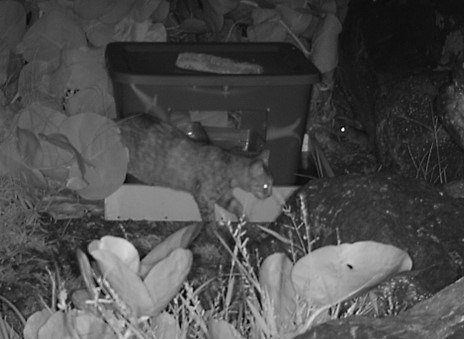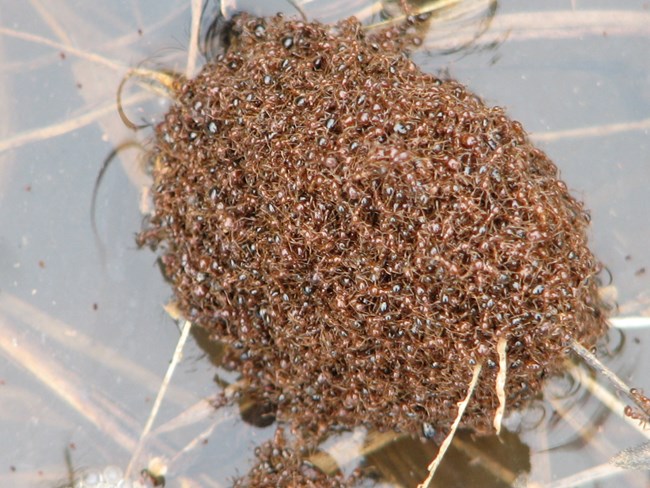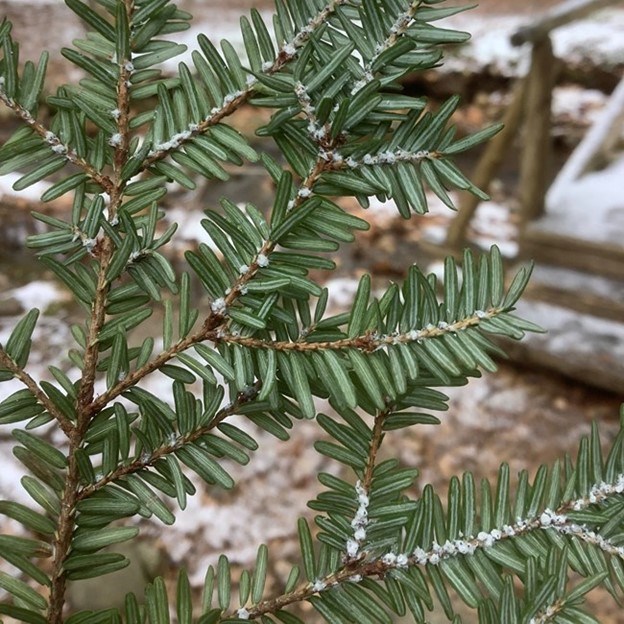Invasive animals have destroyed ecosystems, spread diseases to humans and other animals, affected our ability to grow food, and even damaged buildings and other structures. The species below, while not a complete list, are particularly problematic in our parks.

NPS Photo
1. Free-ranging cat (felis catus)
Domesticated cats, our beloved household pets, are found throughout North America and the Pacific Islands, but do not naturally occur in the wild. They first appeared in the U.S. and its territories during European settlement in the 17th century. Although pet cats that are kept indoors do not cause problems, many cats are allowed to roam freely outdoors or are abandoned every year. These “free-ranging cats” may look like your pet cat, but they may scratch or bite if approached.Free-ranging cats have significant impacts on natural environments. They have been shown to reduce native small mammal, reptile, and invertebrate populations, and are a major contributor to the decline of bird populations. In fact, cats have been a major contributor to the extinction of several mammal, reptile, and bird species. Free-ranging cats can also spread diseases to humans, such as toxoplasmosis and rabies.
What you can do to help:
- Spay or neuter your cat and keep it indoors, leashed, or crated at all times.
- Surrender unwanted cats to a shelter; don't release them outdoors. This may seem like the more humane option, but it is detrimental to wildlife and inhumane to the cats.
- Do not feed stray cats. The food supports a larger cat population than would otherwise survive outdoors, and it can attract other animals, such as mice and rats. You may think feeding outdoor cats will keep them from hunting wildlife, but cats will hunt even if they are not hungry. Even well-fed cats have been found to make a significant impact to wildlife loss.

Photo by Leah Bauer
2. Emerald ash borer (Agrilus planipennis)
The emerald ash borer is a bright green beetle that feeds on ash trees. It was first found in the U.S. near Detroit, Michigan, in 2002. It is believed to have been brought to the U.S. via shipping materials from Asia. The emerald ash borer has since spread to 35 states, and it continues to spread west.While the adults only feed on the foliage of ash trees, the larvae feed on the inner bark, making it impossible to transport water and nutrients throughout the tree. This ultimately results in the tree's death. Tens of millions of trees have already died in the U.S. Ash trees are important, as they provide habitat for a number of animals and other plants in eastern forests, help to combat increased temperatures in urban areas by creating shade, and are used to make a number of products, including baseball bats, furniture, and flooring.
What you can do to help:
-
Don't move firewood. Emerald ash borers like to hide in wood, and it is important not to spread them around. Unless it has a USDA APHIS or state seal on it indicating that it has been heat treated, keep firewood within at least 50 miles from where it was cut down.

NPS Photo
3. Feral swine (Sus scrofa)
Feral swine, also known as wild boars, hogs, or pigs, were introduced by Europeans to North America either as a source of food for early colonists or hunting. They reproduce readily, making them difficult to control once they have established at a site. Though they have been around for hundreds of years, they continue to cause considerable damage to the environment and agriculture, and even pose health and safety risks to people. Much of the impact by feral swine is caused by their habit of rooting in the soil to obtain food. Rooting destroys native vegetation and crops, causes erosion, damages and destroys cultural resources (e.g. cemeteries, battlefields, burial mounds), and affects water quality of nearby streams. Feral swine also carry at least 30 diseases and 40 parasites, some of which can be spread to wildlife, livestock, and people. What's more, these invasive hogs can be quite aggressive with people and cause considerable harm if they attack.
What you can do to help:
-
Do not relocate and release feral swine. This may seem simple enough, but every year people who wish to hunt feral swine closer to home introduce them to new parts of the U.S.

NPS Photo
4. Red imported fire ant (Solenopsis invecta)
Red imported fire ants are a species that most people can agree they wish would not have been introduced to the U.S. Nonetheless, they stowed away to the southeastern U.S. via cargo ship and have spread out from there. This remarkably resilient species is known for digging large mounds, especially in disturbed areas, and sometimes forms "rafts," or large clumps of ants that float, to escape flooding. Red imported fire ants are most known for their painful bites and stings. While rarely fatal, they can cause dangerous allergic reactions. Fire ants not only attack people, but also attack pets and wildlife. In fact, red imported fire ants have contributed to threatened and endangered sea turtle nesting declines in some parks. Plus, these ants cause considerable amounts of damage to the crops we eat every year.
What can you do:
- Clean all hiking, camping, work, and other outdoor equipment between locations (this includes your boots!)
- Clean your vehicles and/or trailers when you know you have been in areas where red imported fire ants may occur.

NPS / Jesse Wheeler
5. Hemlock Woolly Adelgid
The hemlock woolly adelgid is a tiny insect that feeds on the sap of hemlock trees. The species was accidentally introduced from Japan, and now occupies a large swath of the eastern U.S. and continues to spread. Hemlock woolly adelgids produce a white, woolly, wax-like substance at the base of hemlock needles that allows the adelgid to protect itself from predators.Hemlock trees are important for providing shade and habitat to a number of wildlife species, particularly along streams. The hemlock woolly adelgid has devastated these habitats and is a major factor in the change in composition of eastern forests (along with #2 above). Upon being infested, trees can die in as early as four years. To protect eastern hemlock forests, scientists and land managers are releasing beetles that prey upon the hemlock woolly adelgids in the hopes that they will shrink their populations and minimize the damage they do.
What can you do:
- Clean all hiking, camping, work, and other outdoor equipment between locations (again, don’t forget those boots!)
- Clean your vehicles and/or trailers when you know you have been in areas where hemlock woolly adelgids may occur.
There are many more invasive animal species that can be found in our parks and throughout our communities. Many of the suggestions for helping above can also help with those species. Find out more about what you can do to help with the invasive species problem.
Last updated: August 21, 2025
